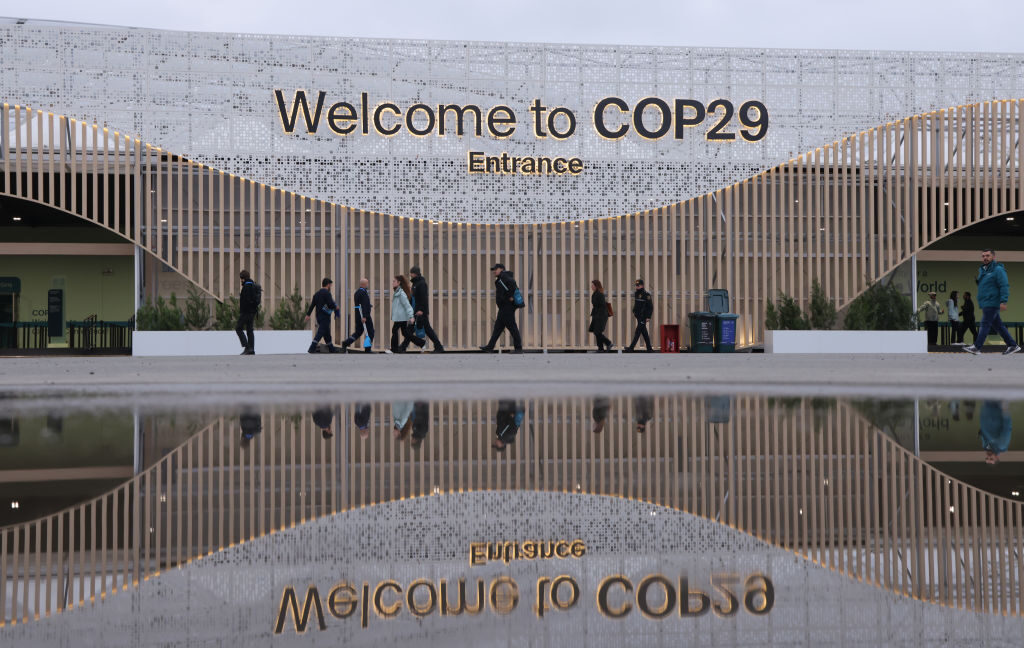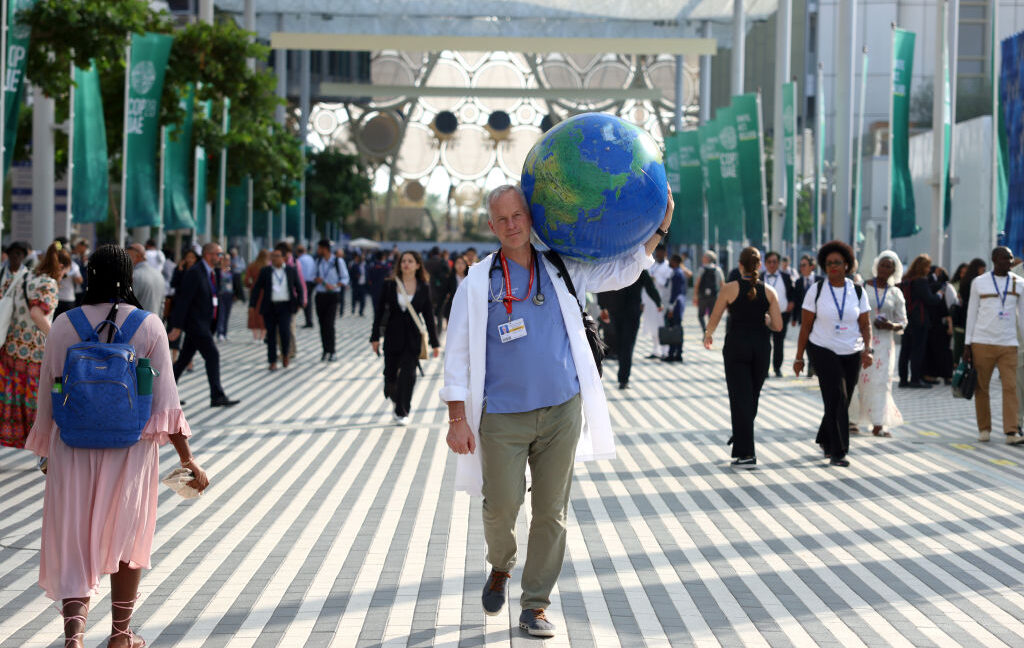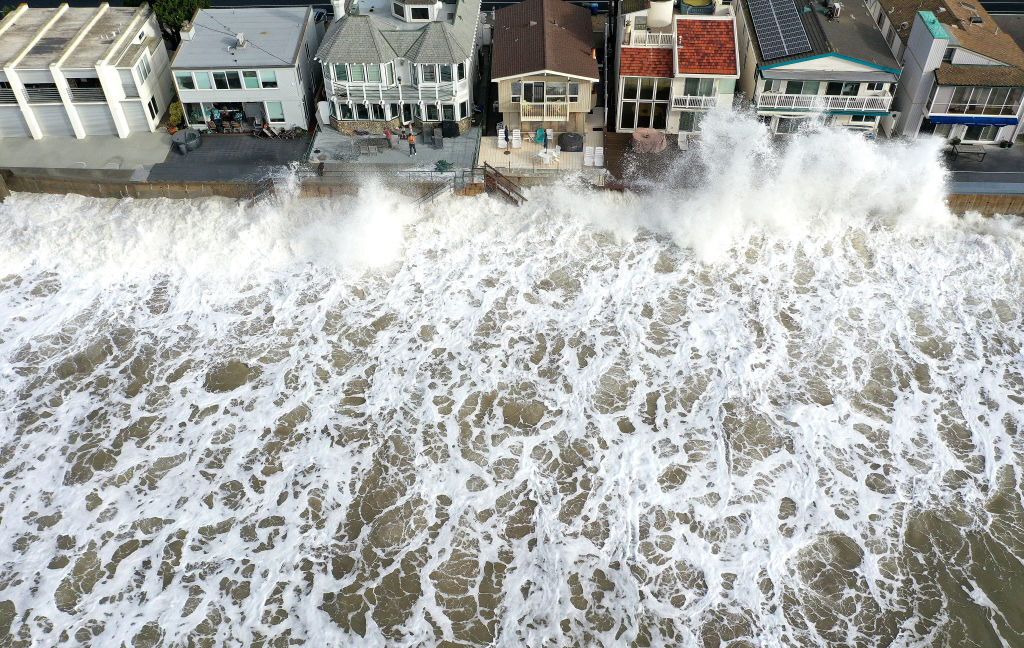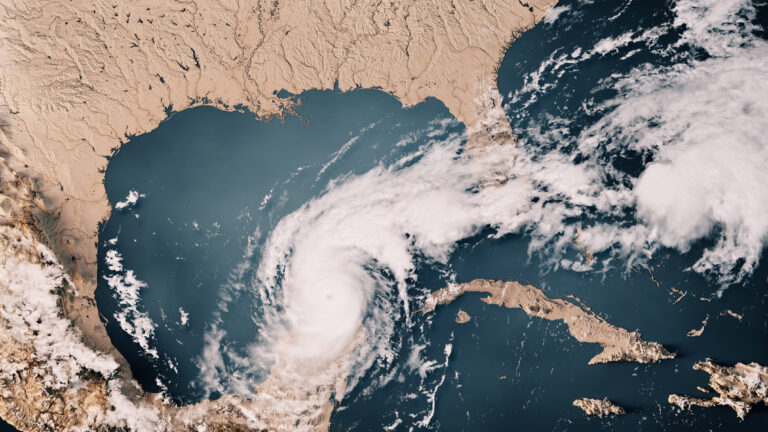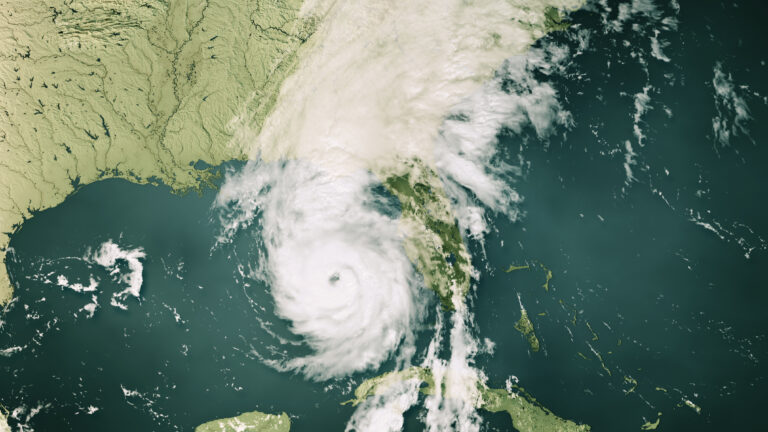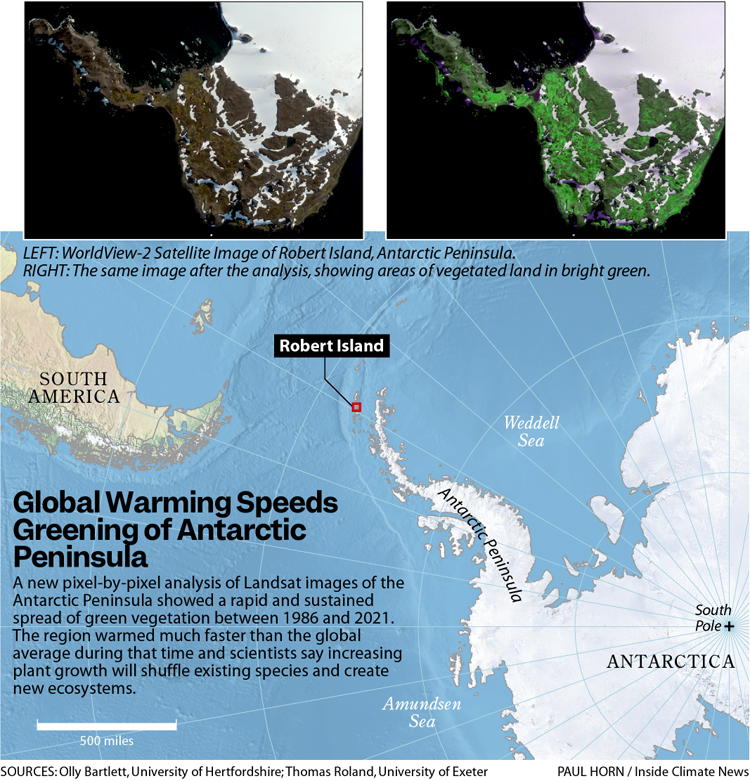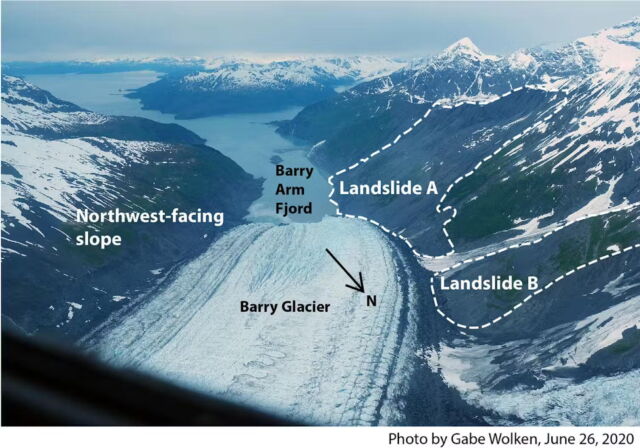Seagrass is fantastic at carbon capture—and it’s at risk of extinction
An underwater gardening experiment along the East Coast aims at restoration.
A crab inhabits a bed of eelgrass at Cape Cod National Seashore in Massachusetts. Eelgrass provides critical habitat for hundreds of species. Credit: Holly Plaisted/National Park Service
In late September, seagrass ecologist Alyssa Novak pulled on her neoprene wetsuit, pressed her snorkel mask against her face, and jumped off an oyster farming boat into the shallow waters of Pleasant Bay, an estuary in the Cape Cod National Seashore in Massachusetts. Through her mask she gazed toward the sandy seabed, about 3 feet below the surface at low tide, where she was about to plant an experimental underwater garden of eelgrass.
Naturally occurring meadows of eelgrass—the most common type of seagrass found along the East Coast of the United States—are vanishing. Like seagrasses around the world, they have been plagued for decades by dredging, disease, and nutrient pollution from wastewater and agricultural runoff. The nutrient overloads have fueled algal blooms and clouded coastal waters with sediments, blocking out sunlight the marine plants need to make food through photosynthesis and suffocating them.
The United Nations Environment Program reports more than 20 of the world’s 72 seagrass species are on the decline. As a result, an estimated 7 percent of these habitats are lost each year.
In the western Atlantic, some eelgrass meadows have been reduced by more than 90 percent in the last 100 years, according to The Nature Conservancy, an environmental nonprofit that works to protect lands and waters around the world.
Now, rising sea surface temperatures caused by global warming are pushing the plant to the brink of extinction. Novak, a research assistant professor at Boston University who has studied eelgrass in New England for more than a decade, and a multidisciplinary team of scientists in different states are trying their best to make sure this does not become reality.
Together, they are working to restore eelgrass populations in coastal parks from Maine to North Carolina using a novel approach that has never been tried before with a marine plant: assisted migration.
“We’re trying to identify thermo-tolerant individuals up and down the East Coast and try to move them into areas where the populations are stressed by increases in sea surface temperature, so that we can give those populations a chance of surviving into the future,” Novak said.
Typically, eelgrass thrives in water temperatures between 60° and 68° Fahrenheit, according to Novak. In the last 20 years, sea surface temperatures in the Northeast have warmed faster than the global ocean and exceeded that safe range, mostly due to human activity like burning fossil fuels, according to NOAA Fisheries, a federal agency charged with managing and protecting marine resources in the US.
Blades of eelgrass are viewed up close at Cape Cod National Seashore. Credit: Holly Plaisted/National Park Service
Around 77° Fahrenheit the plants become stressed and struggle to photosynthesize, said Novak. Around 82° they begin to expire. “That’s when the plants no longer can handle the heat stress, and they end up dying,” she said. And it’s getting hotter.
In recent years, she said, water temperatures along the East Coast have surpassed 82° during peak summer months. By 2050, they are expected to increase in the Northeast by two degrees, she said.
The common garden experiment
Anticipating the deadly forecast for eelgrass, The Nature Conservancy brought together a group of scientists in 2022 to figure out how they might change the plant’s trajectory. Together, the experts on seagrasses, corals, agriculture, forestry, and plant genetics explored options based on what had been done to address the effects of climate change on other ecosystems.
“We wanted to figure out what the solutions were that different groups had come up with, and from those, which ones might apply to the seagrass world,” said Boze Hancock, senior marine restoration scientist with The Nature Conservancy’s global oceans team.
Prolonged marine heatwaves and coral disease have prompted some scientists to experiment with cross-breeding and replanting heat-resistant corals in warming waters, for example. In some cases they have removed whole coral colonies from their natural habitat to preserve their genetics in land-based biobanks.
One of the workshop invitees, biologist Thomas Whitham, shared with the group how he’s used a scientific research tool called the “common garden experiment” to restore deciduous Fremont cottonwood forests that have been dying off in Arizona due to rising temperatures and drought.
The experiments involve collecting plants from different locations and moving them to designated locations to observe how they respond to new environmental conditions. In the case of Fremont cottonwoods, Whitham said the technique has proven vital to identifying trees with specific genetic traits that make them more heat and drought resilient. Cuttings from these trees are now being planted in areas where less resilient trees died off to restore the species in a process known as “assisted migration.”
“We’ve planted many thousands, tens of thousands, of trees using this common garden approach,” said Whitham, a Regents’ professor in the department of biological sciences at Northern Arizona University. It could work for eelgrass too, he told the group.
They could collect seeds from eelgrass populations in the south and plant them in cooler northern waters alongside local seeds and, in effect, identify plants that have a propensity to thrive in warmer temperatures.
Workshop participants were eager to try, said attendee Jonathan Lefcheck, a research scientist at the University of Maryland Center for Environmental Science who has studied seagrasses in the Chesapeake Bay for more than 15 years. “If we do nothing, it’s likely that seagrass—eelgrass—will be extirpated all the way up to New York in the next 50 years,” he said. And with it, all the services it provides to wildlife and humans.
Underwater forests
Eelgrass provides critical habitat for hundreds of species.
“It’s the forest under the water in the estuaries,” said Bradley Peterson, a professor of marine science at Stony Brook University’s School of Marine and Atmospheric Sciences who helped initiate the workshops in collaboration with The Nature Conservancy.
Scientists believe seagrasses evolved from terrestrial plants 70 to 100 millions years ago. “When they went into the marine world, they brought all the machinery they had with them for the terrestrial world, real seeds, real flowers, and real roots,” said Peterson, who is working to restore eelgrass near Long Island.
Its green grass blades, which can grow up to a couple feet long, offer food and shelter to horseshoe crabs, seahorses, and fish of all sizes that weave through its mazes. Little shrimp pollinate the plant’s flowers like “bees of the sea,” said Lefcheck. For bigger fish, “it’s this beautiful buffet,” he said. “You get this whole ecosystem that’s built up around this habitat that’s just sort of gently swaying there underneath the waves.”
In New England, eelgrass is vital for commercial scallop and oyster fisheries. Same for the Atlantic cod. “The cod industry is massive, so if you start losing that habitat, then your commercial fisheries go,” Novak said.
You also lose important coastline protection. Seagrass helps prevent erosion and buffers shorelines from flooding and storm surge. It can reduce wave energy by 50 percent, according to Novak. It also improves water quality and clarity by filtering pollutants and storing excess nutrients, reducing the prevalence of bacteria that can cause coral disease or contaminate seafood. “If you lose eelgrass, you’re going to have dirtier waters,” she said. Global warming could also be exacerbated.
Eelgrass is the most dominant type of seagrass along the East Coast. Credit: d3_plus D.Naruse @ Japan via Getty
Seagrasses sequester up to 18 percent of carbon stored in the ocean, capturing it 35 times faster than tropical rainforests, according to the World Wide Fund for Nature. The New York Department of State, Office of Planning, Development and Community Infrastructure reports each acre of seagrass can potentially sequester the same amount of carbon emitted by a car driving nearly 4,000 miles each year. But when this unique marine habitat is destroyed, carbon that has been stored in the plant’s roots and sediments—sometimes for thousands of years—is released back into the atmosphere, said Novak.
Sharing seeds
To have a chance at repopulating eelgrass along the East Coast, scientists like Novak, Peterson, and Lefcheck realized they would have to share information and collaborate across state borders—something to which academics are not always accustomed, according to Novak.
“It’s not our nature to share information that freely, because we’re supposed to be focusing on publishing,” she said. But the crisis at hand had inspired a change in the status quo. “We’re a team,” she said. “We’re about saving the eelgrass and doing what’s best for this ecosystem.”
They call the regional effort HEAT (Helping Eelgrass Adapt to Temperature). In the last year, participants have been working together to identify the best possible sites for planting common gardens along the East Coast. So far, they’ve homed in on several national parks: the Cape Cod National Seashore, Fire Island National Seashore in New York, Assateague Island in Maryland and Cape Hatteras and Cape Lookout national seashores in North Carolina.
“We want to set ourselves up for some success and use the information we have about these parks to guide our decision-making and make sure we’re putting these in places where they might have enough light, where they won’t have as many human impacts,” said Lefcheck.
They’ve also begun collecting and sharing seeds. “We’re sharing actual plants with each other for genomics, and then we’re also sharing seeds with each other for doing our common gardens and for experiments,” Novak said.
This past year Novak sent samples of eelgrass plants collected in Massachusetts to the University of North Carolina Wilmington for Stephanie Kamel, a professor in the department of biology and marine biology at the university, to analyze. Kamel is looking for plants that have specific genetic markers that might make them more resilient to challenging environmental conditions like warmer temperatures and lower light, which is becoming an increasing problem as sea levels rise due to global warming pushing the plants deeper underwater. Currently, she’s analyzing the DNA of 800 eelgrass plants from 60 meadows along the East Coast. “We’re going to have this sort of unprecedented level of detail about genomic variation across the range of Zostera (eelgrass),” said Kamel.
This information could be used to help collaborators figure out which seeds they should plant in different locations based on their specific environmental conditions and challenges, said Jessie Jarvis, a seagrass ecologist and professor who works with Kamel at the University of North Carolina Wilmington.
“It’s almost like a dating app for seagrass,” Jarvis said. “You could be a little bit smarter about picking your source populations to match what your restoration needs are, rather than just kind of throwing seeds from everywhere and hoping that something works.”
In the meantime, though, common gardening remains the most practical tool to figure out which plants from which locations may be the best stock for future eelgrass populations. This past year Kamel and Jarvis piloted a common garden experiment in North Carolina and Virginia.
“We took those seeds from what we thought were, quote, unquote, good sources (in North Carolina), and we actually moved them to Virginia. And then we took some Virginia seeds and moved them to North Carolina to actually see what would happen in terms of growth,” said Kamel. While it’s still too early to draw firm conclusions from the experiment, Kamel said preliminary results seem promising. “There are really encouraging signs that we have been able to find some genomic changes associated with temperature resilience,” she said.
Others are following suit. This past spring, Novak and Peterson harvested reproductive eelgrass shoots filled with seeds while snorkeling and scuba diving in Acadia National Park in Maine and Cape Cod, Nantucket, Gloucester in Massachusetts. Lefcheck harvested in Maryland. “What we do is harvest them before they’ve released the seeds, because the seeds are tiny, like the size of a pinhead,” Lefcheck said. The shoots are then held in saltwater tanks until the seeds drop and can easily be collected and stored until it’s time to plant them.
It’s best to wait to plant eelgrass in the early fall, after most of the late summer storms have passed, according to Novak, who spent several days planting seeds in Pleasant Bay and nearby East Harbor this September with a team including a biologist from the National Park Service and a representative from the Mashpee Wampanoag Tribe. To get to the Pleasant Bay site, they motored out onto the water on an oyster farming boat. “The oyster farmers are interested in the project because our site is adjacent to their farm and they recognize that healthy beds are important to sustaining their livelihood,” Novak said.
Before getting wet, Novak and her team ran through their gardening plan. “We do dry runs on land, just to get everybody organized, but it’s not the same when you get into the water,” she said. “You’re trying to hold things underwater. You can’t see as well, even if you have a mask on.”
They would establish two 25-meter transect lines and then plant seeds from different donor sites in New York and Massachusetts. Nantucket was one of them. “We knew conditions were warmer at that particular site, so we said, let’s, let’s test them at Cape Cod,” she said.
Up to 500 seeds from each location would be planted by releasing them into the water column from a test tube or dropping tea bags filled with the seeds that would meander their way down to the seabed into 1-meter plots.
It was a slow process, Novak said, requiring hyper organization to make sure it’s clear which seeds have been planted where so that they can be monitored. In January, she will return to the sites to see if the plants are germinating. Then in the spring she’ll really be able to measure growth and compare how the different plants are faring in comparison to one another. “By next summer, we should have genomics for all of our populations, so that should really be guiding our efforts at that point,” she said.
Teresa Tomassoni is an environmental journalist covering the intersections between oceans, climate change, coastal communities, and wildlife for Inside Climate News. Her previous work has appeared in The Washington Post, NPR, NBC Latino, and the Smithsonian American Indian Magazine. Teresa holds a graduate degree in journalism from the Craig Newmark Graduate School of Journalism. She is also a recipient of the Stone & Holt Weeks Social Justice Reporting Fellowship. In addition to reporting on oceans, Teresa teaches climate solutions reporting for The School of the New York Times.
This story originally appeared on Inside Climate News.
Seagrass is fantastic at carbon capture—and it’s at risk of extinction Read More »




